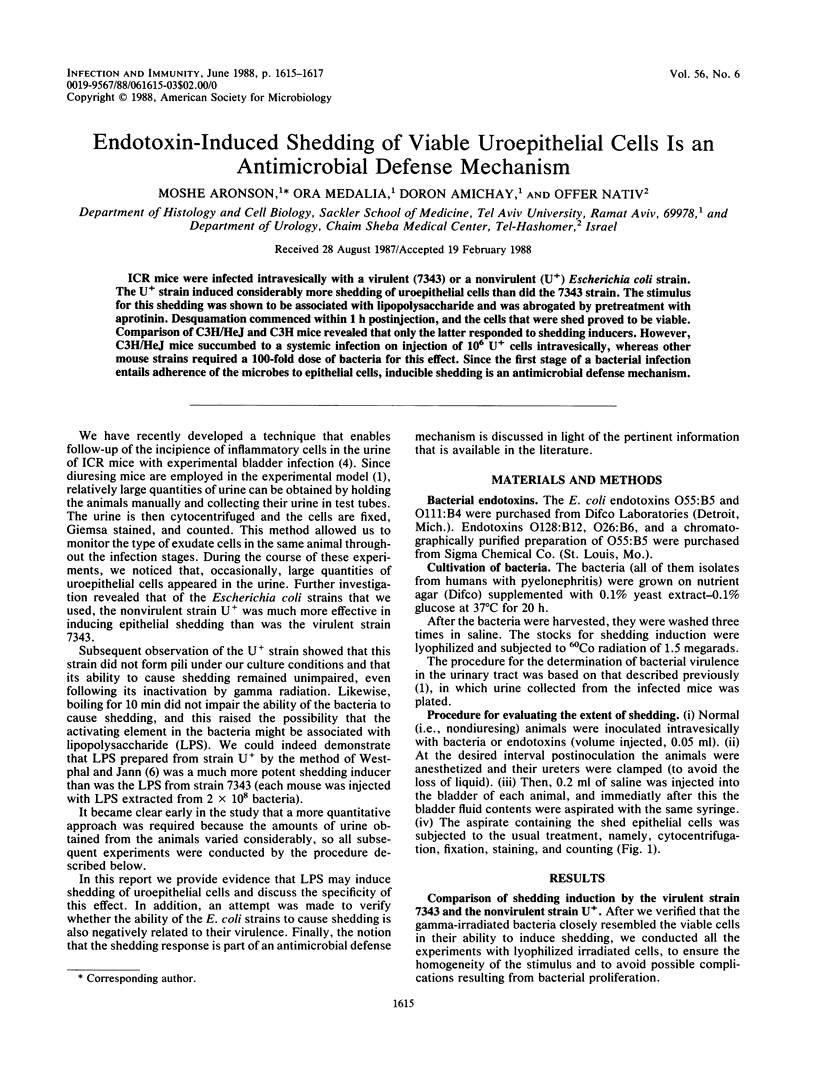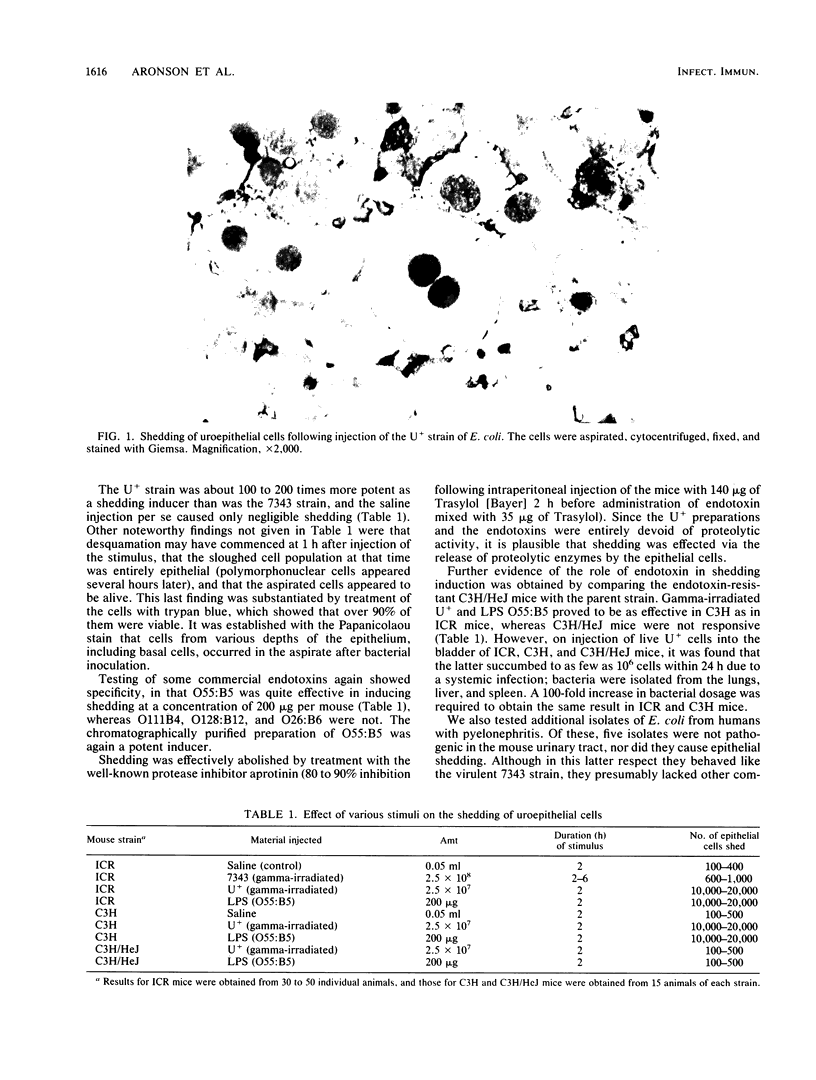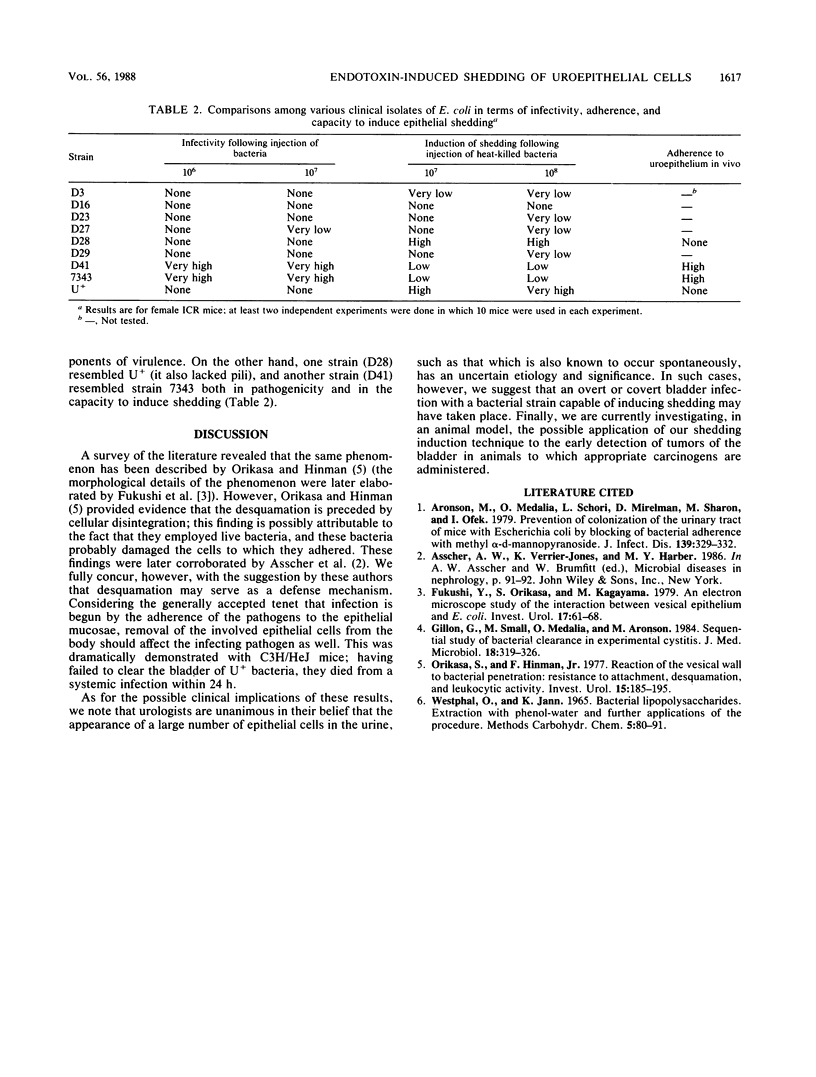Abstract
ICR mice were infected intravesically with a virulent (7343) or a nonvirulent (U+) Escherichia coli strain. The U+ strain induced considerably more shedding of uroepithelial cells than did the 7343 strain. The stimulus for this shedding was shown to be associated with lipopolysaccharide and was abrogated by pretreatment with aprotinin. Desquamation commenced within 1 h postinjection, and the cells that were shed proved to be viable. Comparison of C3H/HeJ and C3H mice revealed that only the latter responded to shedding inducers. However, C3H/HeJ mice succumbed to a systemic infection on injection of 10(6) U+ cells intravesically, whereas other mouse strains required a 100-fold dose of bacteria for this effect. Since the first stage of a bacterial infection entails adherence of the microbes to epithelial cells, inducible shedding is an antimicrobial defense mechanism.
Full text
PDF


Images in this article
Selected References
These references are in PubMed. This may not be the complete list of references from this article.
- Aronson M., Medalia O., Schori L., Mirelman D., Sharon N., Ofek I. Prevention of colonization of the urinary tract of mice with Escherichia coli by blocking of bacterial adherence with methyl alpha-D-mannopyranoside. J Infect Dis. 1979 Mar;139(3):329–332. doi: 10.1093/infdis/139.3.329. [DOI] [PubMed] [Google Scholar]
- Fukushi Y., Orikasa S., Kagayama M. An electron microscopic study of the interaction between vesical epitherlium and E. Coli. Invest Urol. 1979 Jul;17(1):61–68. [PubMed] [Google Scholar]
- Gillon G., Small M., Medalia O., Aronson M. Sequential study of bacterial clearance in experimental cystitis. J Med Microbiol. 1984 Dec;18(3):319–326. doi: 10.1099/00222615-18-3-319. [DOI] [PubMed] [Google Scholar]
- Orikasa S., Hinman F., Jr Reaction of the vesical wall to bacterial penetration: resistance to attachment, desquamation, and leukocytic activity. Invest Urol. 1977 Nov;15(3):185–193. [PubMed] [Google Scholar]



